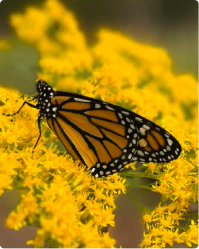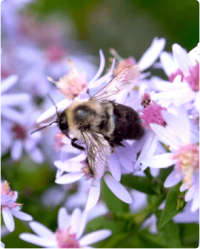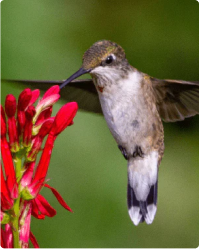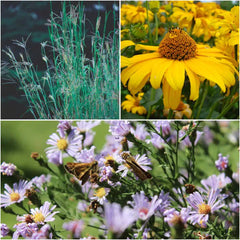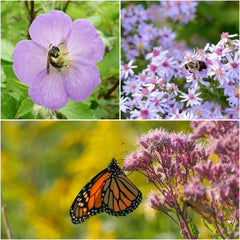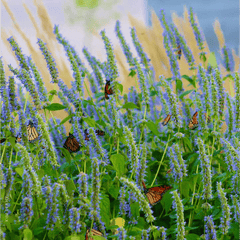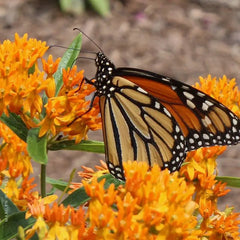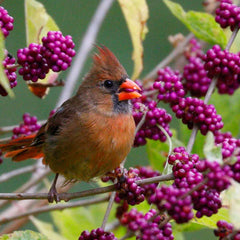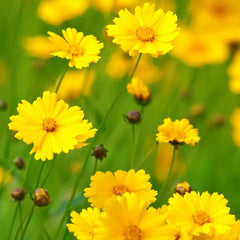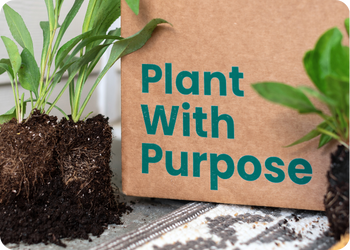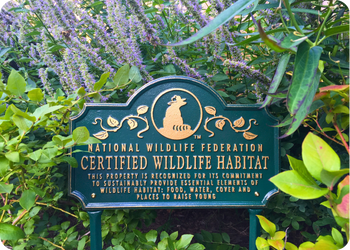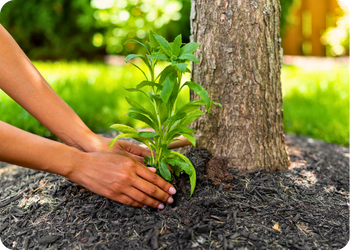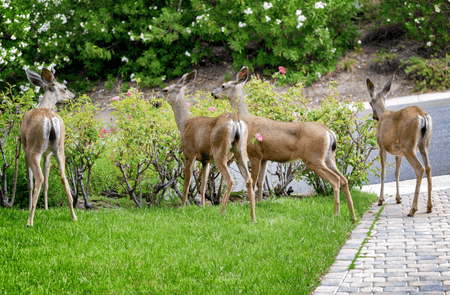It’s Time to Ban Plastic Grass


It's time to talk about the ugly truth behind plastic grass. A lush, green lawn is one thing, but at what cost to the environment? Let's take a closer look at the problems with plastic grass and why it's time to ban it altogether.
Plastic grass in modern society
It's hard to deny the prevalence of artificial grass in today's world. From sports fields to residential lawns, this synthetic material has become a popular choice for those seeking what they believe is a low-maintenance, green-looking solution. However, the convenience of fake grass is often highly exaggerated and comes at a significant cost to both the environment and our health.
Environmental impact
Think about it; artificial grass doesn't biodegrade like living grass. So, when this material is discarded, it ends up polluting our oceans, rivers, and other waterways, harming marine life and ecosystems for years to come. Additionally, the production of plastic grass contributes to carbon emissions, making it an environmental nightmare. Native wildflowers, shrubs, trees and other native plants not only provide habitat for declining wildlife, they reduce urban heat islands, increase carbon sequestration, manage storm water runoff and don’t need toxic chemicals to thrive.
Health risks
There are health risks associated with the use of plastic grass. For instance, artificial turf can get hot under the sun, potentially causing burns to people, pets, and wildlife. There are also concerns about the chemicals used in the production of plastic grass and whether or not they pose a threat to our health.
Overall, it's clear that the widespread use of artificial grass is a significant problem. It's time to start thinking about banning this plastic product and switching to more environmentally friendly solutions.

The urgency of banning artificial grass
It's time to face the truth — fake grass is causing harm to our planet. The so-called convenience of artificial grass comes at a huge environmental cost. The manufacturing of fake grass releases harmful chemicals into the air, polluting our planet and the air that we breathe. It’s also a material that can take centuries to break down.
The impact on future generations
The negative effects of plastic grass are not only limited to our current generation. If we don't take action to ban it now, we will contribute to leaving a polluted world for future generation.
We owe it to our planet and future generations to take action now and ban fake grass. We must push for ecosystem-friendly alternatives, such as native grasses and native plant gardens, that can provide the same benefits without the environmental consequences.
It's time to take a stand and make a change. Say no to artificial grass and protect our planet for future generations.
The origins of synthetic turf
Synthetic turf, also known as artificial grass, was first invented by James M Faria and Robert T Wright, and it was first installed in a recreation area of a school in 1964.
Then a group of researchers led by David Chaney went large and created the first synthetic turf made of nylon, which was used in the Houston Astrodome in 1966. It quickly gained popularity in sports stadiums and eventually made its way into residential and commercial landscaping.
While at first it seemed like a great alternative to natural grass, we now know that it poses several environmental and health risks.

The shocking rise of artificial grass
When was the last time you walked on a football or soccer field? Chances are, the grass beneath your feet was not real at all. But it's not just sports fields. Artificial grass is now used in residential lawns, parks, and even commercial landscaping. It's touted as a low-maintenance, durable solution, but at what cost?
The rise of community action
More and more, community leaders are taking notice of the environmental and health impacts of plastic grass. In Boston, for example, the mayor ordered no new artificial turf to be installed in city parks. This makes Boston the latest in a small but growing number of cities around the world to limit the use of the product because it contains dangerous chemicals.
And it's not just lawmakers. Concerned citizens and organizations are making their voices heard and pushing for change.
It's time to start thinking critically about the long-term impacts of using artificial grass. We can work together to find more sustainable solutions and make our voices heard.
The environmental impact of plastic grass
Plastic grass is extremely slow to break down, so it accumulates in landfills, ultimately leading to waste management challenges. Furthermore, the use of artificial grass leads to the production of microplastics as these materials break down, which contributes to the pollution of our soils and waterways..
The production of plastic grass requires the burning of fossil fuels, resulting in carbon and other greenhouse gas emissions, while not contributing to carbon capture like natural, native grasses. In addition, plastic grass will also eliminate available habitat for local wildlife , impacting biodiversity, soil composition, and water retention.

Public health concerns associated with fake grass
Artificial grass or plastic grass is widely used in outdoor spaces such as commercial and residential properties, sports facilities, or public parks. Although it may seem like a convenient alternative to natural grass, the truth is that artificial grass poses serious health concerns that should not be overlooked.
Chemical exposure risks
One of the most significant risks associated with synthetic turf is exposure to potentially hazardous chemicals that can cause various health issues. The materials used in manufacturing plastic grass contain toxic chemicals like PFAS (per-and polyfluoroalkyl substances)--also known as “forever chemicals” because of how long they persist in the environment—which can leach into the environment, putting humans and wildlife health at risk.
Safety concerns
Plastic grass can also pose a significant risk to people's safety — particularly for young children who love to play outdoors. When artificial grass gets hot, it becomes an accident-prone surface that can cause burns and blisters. Moreover, artificial turf often has poor drainage, which can lead to slips and falls in wet conditions.

The heat-island effect and its impact on urban populations
- Did you know that artificial turf fields can get superheated to temperatures from 120 to 180 degrees F?
- Multiple studies in the US alone have highlighted the heat stress of artificial turf, with all studies highlighting the heat stress of plastic grass.
It's clear that this is not only harmful to the environment, but can also pose a serious risk to the people who use it.

The socio-economic cost of plastic grass
Plastic grass comes with a hefty price tag when it comes to maintenance and disposal, and it’s taxpayers and municipalities who are left to bear the cost. Not only does plastic grass persist in the environment long after disposal, but it also requires a significant amount of upkeep to keep it looking good.
This means that municipalities need to invest in expensive equipment, fertilizers, and herbicides to maintain it, all of which add up to a lot of money. In addition, when plastic grass eventually needs to be replaced, adding disposal costs.
Instead of spending money on plastic grass, municipalities could be investing in sustainable alternatives. For example, they could be planting trees, wildflowers, or other native plants that would not only be better for the environment but also provide aesthetic benefits, reduce ambient noise, and improve air quality.
The effects of plastic grass bans
A ban on artificial grass will have many positive effects on both the environment and public health, which include the following benefits:
Reduction in landfill waste
By banning plastic grass, we can significantly reduce the amount of waste that ends up in our landfills. Artificial grass can take hundreds of years to biodegrade in our environment.
Improved air quality
Another positive effect of banning artificial grass is the improvement in air quality. Artificial grass often contains chemicals and other pollutants that can be harmful to human health. By banning plastic grass, we can help to reduce the amount of toxins and pollutants around us.

Healthier people and pets
Finally, banning plastic grass can help to create a healthier environment for both people and pets. The chemicals found in artificial grass can be harmful to animals and can even be ingested by pets if they try to eat the grass. By banning plastic grass, we can help to create a safer environment for our furry friends and reduce the risk of them getting sick.
Additionally, the chemicals found in artificial grass can also be harmful to humans, with some chemicals, such as PFAS, linked to increased risks of cancers and negative impacts to the immune and reproductive systems. By banning plastic grass, we can help to make our communities safer and healthier.
It's clear that banning plastic grass can have a positive impact on both the environment and public health. Let's work together to create a greener, healthier world.
The path forward — alternatives to plastic grass
Native grasses provide numerous benefits to our communities and the ecosystems we are part of. It reduces soil erosion and absorbs carbon dioxide, helping to mitigate the effects of climate change. It also provides a habitat for wildlife and improves air and water quality.
Other sustainable landscaping options include:
- Flowering native plants that require less water and maintenance
- Xeriscaping, which uses drought-tolerant plants and landscaping techniques
- Permeable paving, which allows water to filter into the ground instead of creating runoff.
The deception of plastic grass manufacturers and sellers
One of the most common arguments made by plastic grass sellers and manufacturers is that artificial turf is a more eco-friendly alternative to natural grass. They claim that plastic grass doesn't require water, fertilizers, or pesticides, so it's a great solution for homeowners who want to save money and protect the environment.
However, this argument couldn't be further from the truth. The reality is that plastic grass is far from eco-friendly and has many negative environmental impacts, such as the following:
It's made from non-renewable resources — plastic grass is made from plastic, which is a petroleum-based product that takes hundreds of years to biodegrade. This means that every plastic grass lawn that is installed will be sitting in a landfill for centuries to come, while releasing harmful chemicals and microplastics into the environment.
It's a poor substitute for the real thing — plastic grass cannot match the environmental benefits of natural grass. Real grass reduces carbon dioxide, produces oxygen, prevents soil erosion, and provides a natural habitat for animals and insects. Wherever possible, native grasses and plants should be utilized - especially at home!
It's a water hog — contrary to popular belief, plastic grass requires water to clean and cool it down. In addition, the plastic prevents water from seeping into the ground, which takes away the essential water that would have gone to other plants or even your local watershed.
Don't be fooled by the eco-friendly claims of plastic grass manufacturers. Plastic grass has a profoundly negative environmental impact that far outweighs its supposed benefits.

The lack of transparency in the production process
Plastic grass production processes are often shrouded in secrecy. Companies don't typically disclose the full list of chemicals that go into the creation of their products, making it difficult to know what exactly we are exposing ourselves, our children, and our pets to. This lack of transparency is alarming, and it's time for consumers to demand more information.
One of the biggest issues with artificial turf is that it often contains harmful chemicals and materials that are kept secret by sellers and manufacturers. This makes it difficult for consumers to make informed decisions about what they are buying and bringing into their homes.
Sellers and manufacturers are not required to disclose the materials used in their products, so many use this loophole to conceal the fact that their plastic grass contains chemicals known to cause health problems.
Synthetic sports surfaces, now manufactured by various corporations under distinct trademarks, have grown increasingly contentious. This is particularly significant following the possible association between these surfaces and the fatalities of six professional baseball players in Philadelphia, all of whom suffered from an uncommon type of cancer.
Consumers can protect themselves by doing their own research and looking for products that are certified as safe by independent organizations. But without greater transparency and regulation on the part of the industry, the burden of responsibility is unfairly placed on consumers.
Failure to disclose carbon footprint and waste generation
Sellers and makers of plastic grass often fail to disclose the carbon footprint and waste generation of their products. This means that consumers are unaware of the impact that plastic grass has on the environment. The manufacturing process of artificial turf involves the use of non-renewable resources, such as oil, and the production of greenhouse gasses.
It’s important for companies to be transparent about their products and their impact on the environment so that consumers can make informed decisions when it comes to purchasing.
The impact of aggressive marketing tactics
Marketing plastic grass products in public spaces, such as parks and sports fields, normalizes its use and creates a false sense that it is acceptable and environmentally friendly.
Plastic grass manufacturers market their products as low maintenance, a time-saver, and a cost-saving alternative to natural grass. This convenience comes at a cost.
|
Effects of using plastic grass |
Effects of banning plastic grass |
|
|
Plastic grass may be convenient, but the benefits of native plants and other sustainable landscaping options far outweigh the convenience factor.
Aesthetic criticisms of plastic grass
Have you walked past a garden filled with this fake, synthetic grass and been left cringing at the unnatural appearance and feel? It's not only visually unappealing but also hazardous to the environment. Did you know that using synthetic grass =risks leaching harmful chemicals into the surrounding environment? It's time to stand up and demand a ban on plastic grass.
With the rise of environmental awareness, it's hard to justify the continued use of this product. Here are a few things you can do to encourage the banning of plastic grass:
- Make sure to spread the word to your friends and family.
- Encourage others to opt for natural grass or alternative landscaping solutions.
- Take to social media and share the #BanPlasticGrass hashtag.
Ban plastic grass
It's time to take a stand and demand that we ban plastic grass. Let's work together to protect our environment, preserve our natural spaces, and create a healthier, more sustainable future for all.
The excessive use of plastic in our daily lives is seriously damaging our environment.While many people view artificial turf as a convenient option for their lawns, tit comes at an ecological cost..
By replacing natural areas with plastic, we are robbing our ecosystems of resources and contributing to harmful pollution.
Let us join forces to protect our planet and create a sustainable future for generations to come. Together, we can create a demand for environmentally friendly alternatives, like native plants, and make a real difference for the planet.
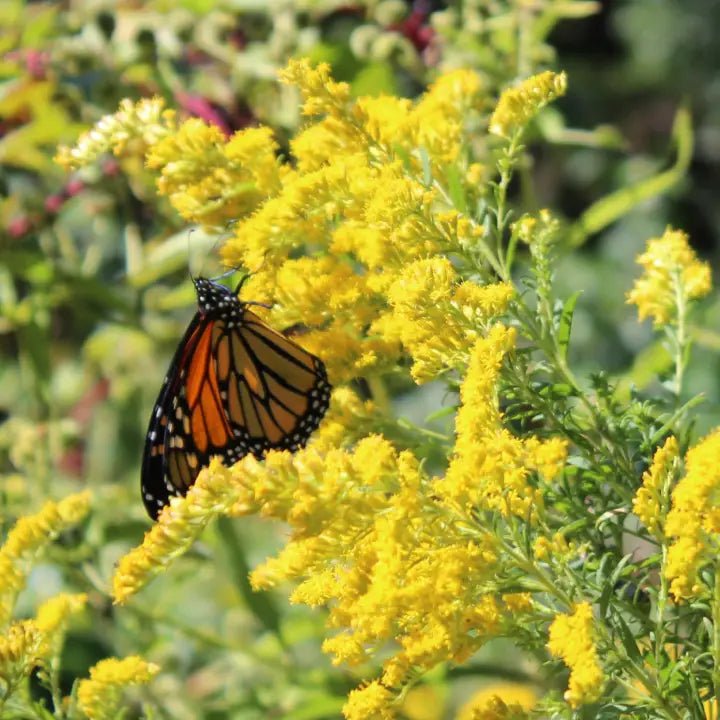
Find Native Plants by Zip Code
We took the guesswork out of planting native. Check your zip to see what ships!
